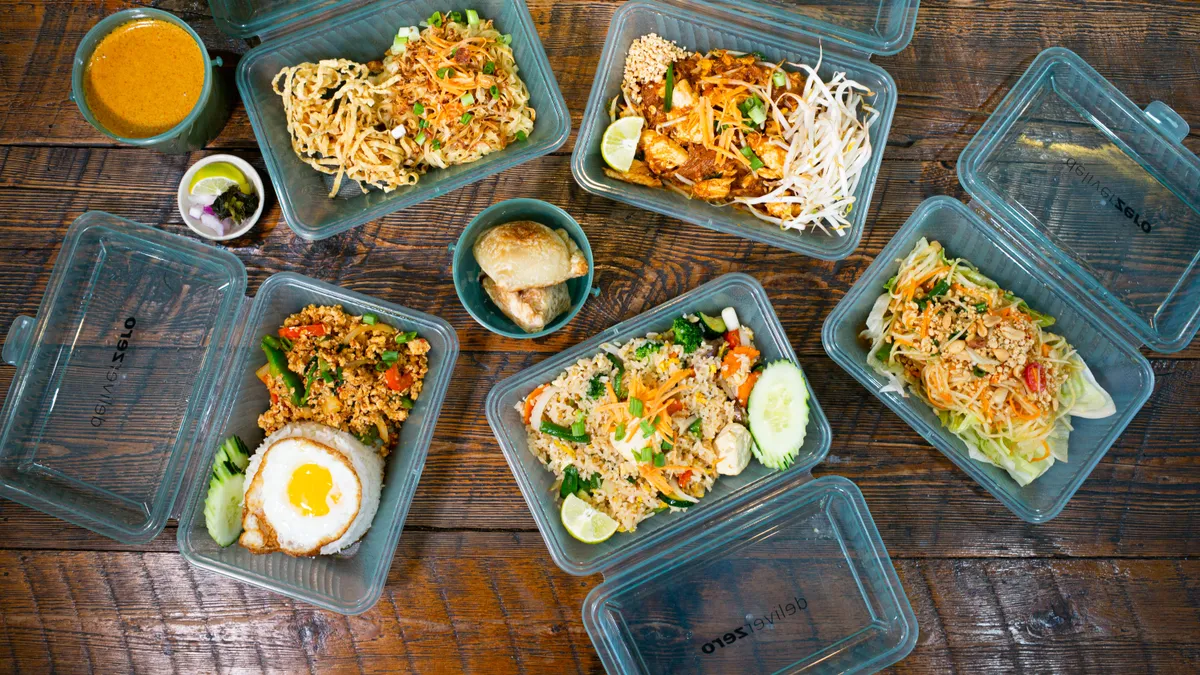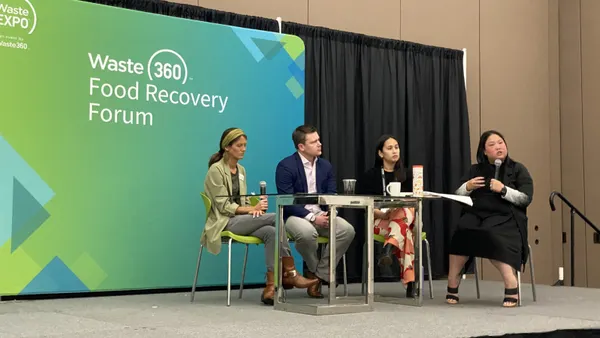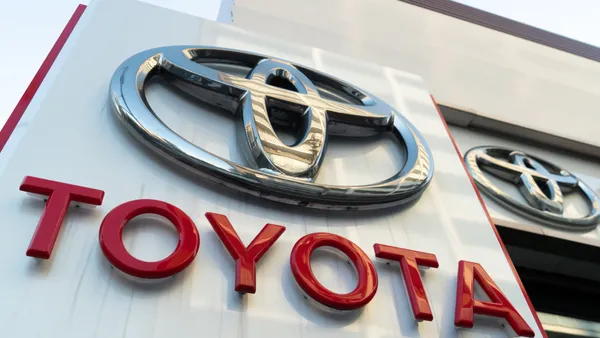As more people throughout the U.S. tiptoe back into offices, reusable takeout packaging companies are hoping their products go with workers to their desks. Accommodating customers at work and at home will force returnable and refillable startups to grow and supporters say the timing couldn’t be better.
While no U.S. regulations currently require reusables in restaurants, consumer interest in these containers is on the rise. To take advantage of this period, reusable takeout brands — of which there are more than 30 in the U.S. — will have to balance consumer desires and best environmental practices, which are sometimes at odds.
For restaurants, “it takes a degree of environmental activism to make these solutions work,” said Lauren Sweeney, the CEO of a New York-based startup called Deliver Zero that is aiming to solve this issue. “They shouldn't have to do that.”
One of the best strategies these companies could use to compete with disposables, experts say, is collaboration.
A pandemic-driven reset
At a minimum, some reusable takeout container companies can come together over the way the pandemic forced drastic business changes.
Dispatch Goods launched in October 2019 entirely in office settings around the San Francisco areas. Restaurants nearby would offer food in their containers and companies would pay for return bins in their offices, which Dispatch would regularly empty.
When the pandemic hit, all the corporate contracts disappeared. Dispatch had to reorganize and find a way to serve customers at home. In August 2020, the company launched the domestic version of its business in which employees would retrieve containers from a diner’s doorstep for cleaning and delivery back to restaurants. Now that people are returning to work, Dispatch has signed new contracts for collection bins in corporate buildings.
“In the end,” said Dispatch Goods Co-Founder and CEO Lindsey Hoell, “this might have been a better order to do it in.”
A similar story played out across the country. Deliver Zero kicked off operations in November 2019, catering to people ordering through its own delivery app. Though the company planned to target employers that provided meals for workers, all thoughts of expansion stopped in early 2020 and the company paused before relaunching that summer.
Deliver Zero, which typically charges diners 25 cents per container or $1 an order when they select the reusable option via food delivery apps, relies on the customer to return the packaging to the restaurants themselves. A growing workplace lunch crowd, however, has the company planning to test a collection box model in offices.
Currently, restaurants need dishwashing facilities to work with Deliver Zero. The possibility of accommodating office spaces motivated the company to find a dishwashing contractor that can step in when the beta test begins, Sweeney said. The company also recently modified its operating system so that Deliver Zero software operates with delivery apps instead of as an independent platform. By tallying the number of containers customers have, the software reduces the burden on restaurants to keep track of how many come in and out.
Consumer demands vs, environmental needs
The pandemic proved that flexible business models succeed, and there might need to be more adjusting as providers juggle what’s best for clients and the environment.
So far, reusable dishes for on-site dining have gotten more attention when it comes to life cycle assessments or research understanding customer appeal, said Matt Prindiville, CEO of Upstream, a nonprofit working to reduce disposable consumption.
The permission for restaurants to put food in reusables is brand new in some markets, as state food and health codes determine a restaurant’s ability to use refillables.
Per the findings of an ongoing research project, 20 states have food codes that allow reusables and another 27 are actively reviewing the policies, said Marcel Howard, policy analyst and coordinator at Upstream. Maine, for example, approved the relevant policy in October 2021 and New York City health codes allowed restaurants to handle refillables a few years earlier.
As these regulatory changes occur, Upstream and other researchers have begun to identify what the growing market might need for success. For food service providers, minimizing the work associated with the containers holds the most appeal.
Cindy Isenhour, an anthropologist at the University of Maine, worked with a graduate student to present a few possible models for reusable takeout containers to a group of 35 Maine hospitality, waste and environmental management stakeholders in the fall of 2021 as part of a larger project examining potential for reusablesin the state. The majority said they would prefer a third-party service that regularly dropped off clean containers, Isenhour said. The cost of devoting permanent storage space and sourcing workers to clean the packaging seemed unmanageable when businesses are already struggling to retain and train staff.
On the other hand, research also shows the less fuel spent shuffling containers between providers, restaurants and customers, the better. Blanca Corona Bellostas, an environmental engineer at Utrecht University in the Netherlands, and her colleagues have examined how different aspects of reusable packaging design can have the smallest environmental footprint. Besides factors like material and number of uses, the amount of fuel used in container transit moderates the product's environmental benefits.
Waste reduction and collaboration allow competition
To scale up and compete with disposable containers, Prindiville thinks that reusable takeout options will also have to standardize and have more predictable handling protocols for diners and reverse logistics systems. Granted, reusables have the best chance of succeeding in markets with restrictions on packaging materials and how they’re managed, Prindiville said.
Compared to reusables, which cost restaurants or diners up to about two dollars each, disposables are cheap — often a few cents per polystyrene foam container — and offer familiar, easy protocols for restaurants to follow: Order more, hand them out, throw them away. In municipalities that have passed legislation to get closer to zero waste goals, styrofoam might not be an option anymore. Alternative containers like compostables or recyclables come with challenges too, as contamination can make the products less appealing to processors.
San Francisco, the home of Dispatch Goods and a city that has sought to aggressively cut back on landfill disposal volumes, shows how legislative pressure on trash volumes and types might help. Hoell has spoken with a few waste haulers in the area which mostly view the company as an interesting project to watch. With haulers under pressure to avoid landfilling, and many supposedly recyclable food containers carrying too much residue, Hoell got the impression that Dispatch Goods products alleviated rather than created problems for them. “At least at this stage, they seem to need relief from the amount they’re hauling,” she said.
Reusables may never be as easy to handle as disposables for consumers, Prindiville said, but the goal should be to compete with the simplicity as much as possible. “Just like how you can recycle anywhere, we need that same convenience for reuse and refill,” he said. “That level of convenience will enable this to scale.”
It’s a possibility Isenhour sees, too. Too many business models for reusables could balloon into an ultimately damaging situation.
“Do we get ourselves back to that same problem that we found with recycling or even composting services, where different things are accepted in different places and people get overwhelmed and get confused so they just check out? That's one of the things that we've been working on,” Isenhour said.
For an example of how standardization could work, Prindiville suggested the half-dozen breweries in Oregon that agreed to share the same refillable glass beer bottles.
The partnership builds on existing bottle processing logistics that customers are already familiar with due to the state’s container deposit system. Like with any other carbonated product, customers pay a deposit on the beer bottles and drop them off at beverage collection stations. Instead of getting recycled, the bottles get sent out for cleaning and redistribution to the brewers via unique codes on the glass. Removable labels still allow for branding, addressing a concern that cropped up with Maine stakeholders in Isenhour’s meeting. Attendees thought reusables could be a quick way to build brand loyalty, Isenhour said, but only when their company’s logo appeared on the packaging.
Whether or not different brands eventually standardize their products or protocols is a distant question for some. Dispatch Goods built out and operates it own collection, cleaning and redistribution system after failing to find existing companies that could handle the work, Hoell said. Expanding to the East Coast meant the company had to replicate its washing and sorting systems there, too, before they needed to expand as floor space and electrical demands for commercial dishwashers grew.
And if standardized containers are meant to reduce consumer confusion, there might be other solutions available. When QR codes took off during the pandemic, the squares drastically simplified communication with Dispatch Goods customers. Previously, telling customers what to do with their takeout containers, like how to schedule a pickup of used tins, relied on phone numbers on each item that directed people to a human-powered AI response.
Replacing the numbers with QR codes brought customers to websites that could provide a lot more information and answer more questions, Hoell said. “I’m excited about how quickly space is growing and changing because it will spur innovation.” And while the company has solved some of its own problems with product access, Hoell hopes other companies entering the space find answers that Dispatch Goods can adopt.
Other solutions to the standardizing dilemma could come from local government. Municipalities losing money on recycling could find reusable handling appealing, Isenhour said, and some cities are piloting programs where they facilitate a cohesive approach for restaurants. Ann Arbor, Michigan, is in the midst of a similar test where the city provides the containers and businesses choose to participate, giving residents one processing and return system to manage. Customers drop used containers in bins at participating restaurants, which in turn wash and reuse them.
More municipal engagement would add to the long list of parties interested in a piece of reusable takeout container management. But the sooner potential providers come together, the sooner they can work through the problem of swapping disposables with reusables in restaurant kitchens. Some companies might be reaching the same conclusion as Prindiville and Isenhour already. Sweeney said Deliver Zero has been talking with other reusable startups and corporations about sharing reverse logistics systems, where one courier handles containers from different brands.
“A lot of people could invest a lot of time, and if the competition gets fierce, some of them will not make it,” Isenhour said. “It's just kind of a shame to waste human intellectual capital when you could potentially collaborate and figure out a way to work on larger scales and get things off the ground quickly.”










